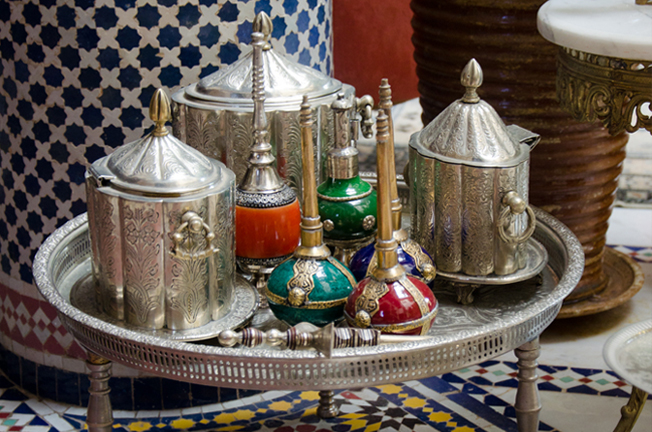A tourist lingers in Fes
Within the souks of Fes el-Bali, the old part of Fes that dates back to roughly 789AD, it’s as if you’ve stepped into a time machine. Or rather, that somehow your life has hurtled forward a few centuries.
The so-called new part of the city is 700 years old (to provide some perspective).
In Fes, you get a sense of tradition upheld as you browse through pyramids of spices, piles of soft dates (“Taste,” the vendor says), pointy slippers in yellow and fuchsia, pretty bowls, handmade pots and jugs, butter-soft leather bags and napkins embroidered with the fine Fessi stitch.
In a narrow alleyway, I duck against a door with an elaborate brass knocker. A donkey, sluggish with heavy aluminium milk pails hanging from its flanks, passes me soundlessly, and a throng of djellaba-clad men squeeze by in a hurry.
I stand still, marvelling at the wonders of an old world, like a picture storybook come to life within the extensive labyrinth of the medina. Unlike the sections run by silver-tongued businessmen, there is far less shrewdness in the produce and domestic parts of Fes. No one is tempting visitors to buy ras el hanout, a teapot, “gunpowder” tea (used to make the ubiquitous Moroccan mint tea), fabric or argan oil.
Here, I jostle with locals, standing in line to point at a bottle of orange blossom water, a jar of elusive preserved lemons (difficult to find in Moroccan markets), blue-and-white Fessi ceramic bowls, a tagine, a set of delicate blue-thread embroidered napkins.
Fes leather is hand-dyed in a malodorous area, the unmissable Chouara, where it has been located since the Middle Ages. Viewed from above, from an adjacent residential block, the tannery sprawls like a gigantic honeycomb filled with multi-coloured natural dyes.
Vigorously, workers labour thigh-deep in the viscous liquids, dipping and squeezing and beating the leather skins. A fetid stench that no amount of fresh mint leaves (merchants hand me a bunch) can eradicate, punctures the air. Still, the bossy salesmen cajole me into buying slippers for my family and intricately designed camel skin ottoman covers that I can flatten to pack at the bottom of my suitcase.
I watch a coppersmith in Place el-Seffarine (where most of Morocco’s brass and silverware is made by hand) as he rhythmically pummels a sheet of metal, transforming it with rudimentary tools into a cooking pot. Women are rummaging through copper vessels, selecting items for their kitchens, haggling, smiling. I envy them.
At the spa in our little riad, I am scrubbed from top to toe in a steamy hamam, and as the layers of the souk’s smells and sounds wash away, I wish that I could linger a while in Fes.
Words and images by Ishay Govender, Ypma
– Half-day artisanal tours of the market and surrounds with Culture Vultures Fez, +212 645 223203, org
– Visit the Centre de Formation et de Qualification dans les Metiers de l’Artisanat where new students are taught the old crafts: forartisanat.ma/fr
– Visit the Musée Dar el-Batha with a guide, for a glimpse at celebrated traditional pottery, leatherwork, embroidery and tiles.



